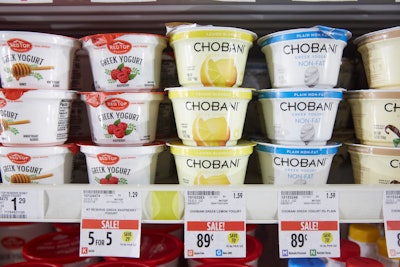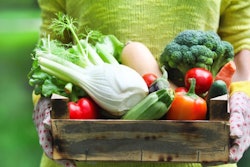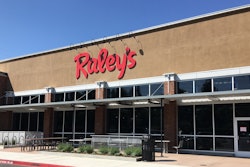
Grocery shoppers continue to demand transparency. But with countless packaged label claims, a lack of clear labeling guidance from government and a majority of brands competing to win, most customers are left confused and skeptical of who to trust.
A global study by Edelman indicates consumer trust has declined across the board in non-government organizations, businesses, media and government. And the number of shoppers reading nutritional labels in stores has grown each year since at least 2014; according to Nielsen data, 59 percent of grocery shoppers have trouble understanding nutrition facts on product packaging.
Imagine the average parent standing in a pasta sauce aisle; they are faced with dozens of product options while contemplating relevant food trends, health advice and packaging claims. The challenge of what to look for on a packaged food and who to trust goes beyond a single purchase.
Top consumer concerns and trends frequently outpace regulatory laws, or often they are not even considered. According to consumer research by the Food Marketing Institute (FMI), nearly two-thirds of shoppers seek to avoid negative ingredients, with added sugar at the top of the list. But the U.S. Food & Drug Administration (FDA) continues to delay mandatory labeling updates requiring manufacturers to declare how much added sugar is in foods. In addition, 59 percent seek minimal processing, yet the natural label is still not well defined, and GMOs continue to be a hot button as well, with 41 percent of shoppers looking to avoid any GMOs in their food.
One study showed 3 in 4 shoppers search for more product information in store, with a majority relying on product labeling or in-store signage, like shelf tags above digital resources, or asking a store associate. But even most solution-oriented shelf tag programs aimed to identify healthy options at the shelf fail to consider added ingredients like sugar, artificial ingredients and preservatives, and level of processing.
Shoppers should not have to guess at deciphering claims and finding options that benefit their family’s health and wellbeing. There is a need for clear and authentic labeling across the grocery store that meets consumers where they are.
Raley’s Supermarkets is taking matters into their own hands with the introduction of their new Shelf Guide, which they hope will help meet the customer’s demand for more transparency across the industry. Raley’s Shelf Guide combines the latest consumer trends and research to deliver custom label icons that help shoppers find the options they are looking for. In partnership with the data company, Label Insight, Raley’s Shelf Guide is authentic to Raley’s and is not influenced by outside brands or products.
It is the first labeling program that considers added sugar in every food category, and excludes more than 600 questionable ingredients and common GMOs with the minimally processed icon, bringing a new, higher standard of clean eating to the market. The custom-built icon, Nutrient Dense, identifies options providing a good source of natural nutrition, and the “No Added Sugar” icon takes into account artificial sweeteners.
Icons are located directly at the shelf and online. And the online shopping experience enables customers to sort products based off of selected attributes. For example, if a parent is looking for a pasta sauce that has no added sugar but is also minimally processed and nutrient dense, they can filter their search based on all three attributes.
By creating thoughtful standards around trends and labels that are not well defined, and bringing desired information to the hands of consumers, Raley’s Shelf Guide creates a desirable experience for customers. The definitions are a unique balance of consumer demands and trusted research, and as a result, provide unbiased label transparency.
Food companies looking to meet any of these attributes will need to consider how to reformulate products to contain less added sugar or a cleaner ingredients deck to be included.



















